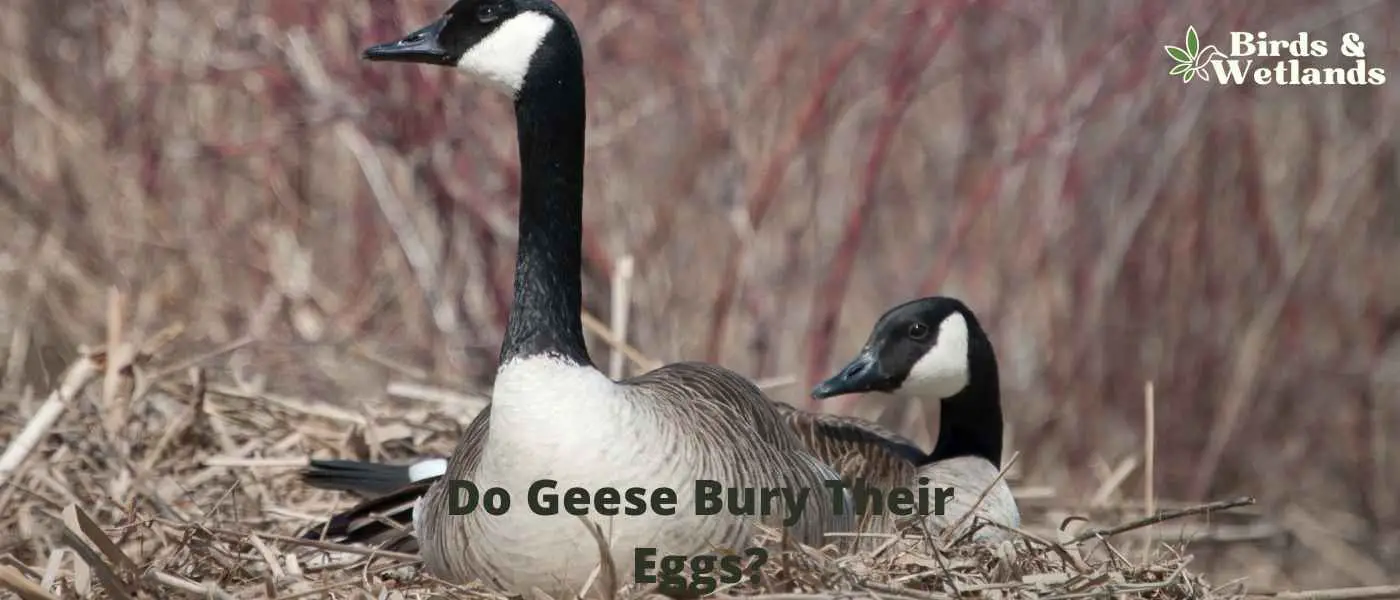Female geese will pile nesting materials on top of the egg in an attempt to conceal it from predators whenever they leave the nest to eat or drink. This provides a measure of protection for the egg and helps ensure that it is not discovered by potential threats.
By obscuring the egg, the female geese can reduce the chances that it will be found and eaten.
How Many Eggs Do Geese Lay Every Breeding Season?
The breed and age of the goose affect the number of eggs a goose lays in a breeding season.
Some species, like the Chinese geese, can lay an average of 50 to 60 eggs in a season, while domesticated geese, like the Toulouse, typically lay between 25 and 40 eggs in a single year.
As for wild geese, Canada geese can lay 2 to 9 eggs every breeding season. Once the clutch is complete, the female Canada goose becomes broody and will sit her goose eggs.
How Many Times Do Canada Geese Lay Eggs in a Year?
In the wild, Canada geese lay their eggs once per year right after their mating season in early spring. The timing of this usually coincides with their breeding season, which takes place in their northern nesting grounds.
Interestingly, while domesticated geese can lay eggs several times a year, their wild counterparts typically stick to a single laying schedule.
This ensures that the eggs have the best chance of survival, as food and resources are more abundant early in the season.
Canada geese typically lay between 2 and 9 goose eggs at a time after their mating season in the early spring, though the average size of one clutch is five.
This can vary depending on the age and health of the goose, as well as environmental factors.
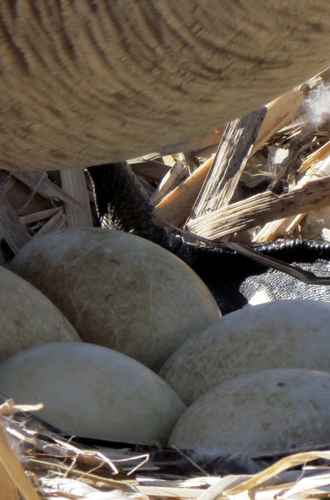
Where Do Geese Lay Eggs?
Geese typically make their nests on the ground. They may lay their eggs in a depression in a field or on a riverbank, but they usually do not start building their nests until late in the season when they have become more settled.
In the wild, geese often build their nests near water. Their nests are made from grasses and other plant materials. The female Canada goose bird will lay one egg daily until she has 2 to 9 eggs.
Do Geese Abandon Unhatched Eggs After Hatching Their First Goslings?
Female geese abandon the nest and any remaining eggs after hatching their first goslings. Once the goslings hatch and start coming out to view the world, the goose will warm them under her wings and leave the nesting area.
The mother goose will need to feed her young and cannot do so if she sits on the eggs.
If you find an abandoned goose egg, you can try to incubate it yourself, but it is unlikely that the egg will hatch.
The Take Away on Geese Covering Their Eggs With Nesting Material
Geese do bury their eggs. Females often cover them with grass, leaves, and other debris to camouflage the nest and hide the eggs from potential predators and other birds.
While not all geese bury their eggs, it is a normal behavior for this species.
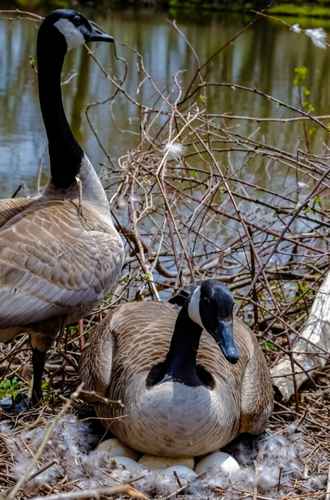
FAQs on Geese and How They Lay Their Eggs
Will a Female Goose Sit on Chicken Eggs?
Although not as common as chickens, broody geese can and do sit on eggs. This instinctual behavior keeps the eggs warm and protected until they hatch.
If you have a broody goose and some extra chicken eggs, don’t be surprised if she starts sitting on them.
Broody geese are protective of their eggs and will do whatever it takes to keep them safe. This can mean aggression towards people or other animals that come near the nest.
If you have a broody goose, it’s best to give her some space and let her do her thing.
However, it would be best to remember those female geese are much larger than hens. If the chicken eggs are fertilized and hatch into chicks, the weight of the female goose may be too heavy for the little chicks.
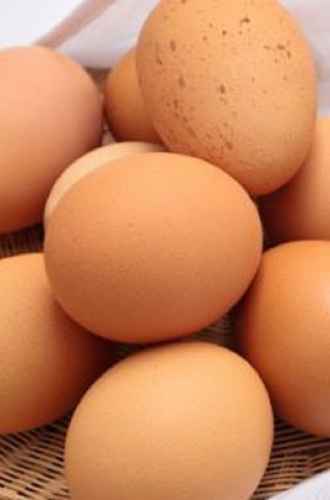
How Long Does It Complete Goose Hatching?
It can take up to three days for a gosling to fully emerge from the goose egg. The hatching process is gradual, and the gosling will continue to dry off, absorb the yolk sac, and develop its feathers during this time.
Once the goose egg is fully hatched, the young gosling can leave the nest and join the rest of the flock.
Goslings are precocial, meaning they are born with most of their feathers and can walk and feed themselves soon after hatching. This is in contrast to altricial chicks, born naked and helpless and requiring extensive parental care.
The precocial nature of goslings allows them to journey from egg to adult in a relatively short time.
Do Canadian Geese Come Back to the Same Nest Every Year?
Canada geese mate for life. When one pair dies, they will search for another mate. They usually return to the nesting location year after year.
They build their nests near water to be close to food sources, and the female will lay between two and nine goose eggs.
If the nesting location is no longer available, they will build their nest in a nearby area instead.
What Do Goose Eggs Taste Like?
Geese eggs are said to taste like duck eggs, richer and eggier than chicken eggs. They are larger than most poultry eggs as well. Some people believe that they are a more luxurious option for an egg dish.
Do You Need to Build a Goose House?
Geese are valuable members of the farming community because they lay eggs. But goose eggs are more difficult to hatch than other fowl such as chickens.
A goose house is a small shelter that can be built to protect your egg-laying domestic goose from bad weather and predators.
It is important to build a goose house in a warm, sunny spot so your goose can stay comfortable year-round.
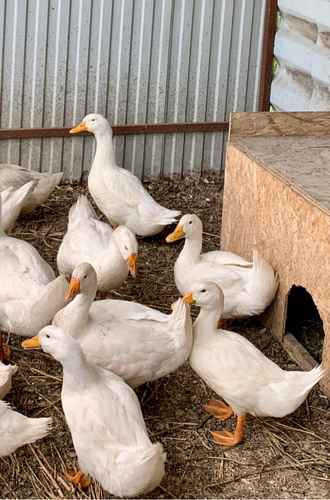
How Do Geese Choose Their Nesting Sites?
Canada Geese generally prefer to nest in locations that offer them a safe place and good view of their surroundings to avoid predators and humans.
Their nesting sites can be found in an elevated area on an island, in the bushes, and in the riverbanks.
The egg-laying female goose will typically select the nesting site and build most of the nest herself. She will add down and some body feathers to the nest after the second egg is laid.
During incubation, the female goose will do all the work while the male goose or gander guards her and the nest.

